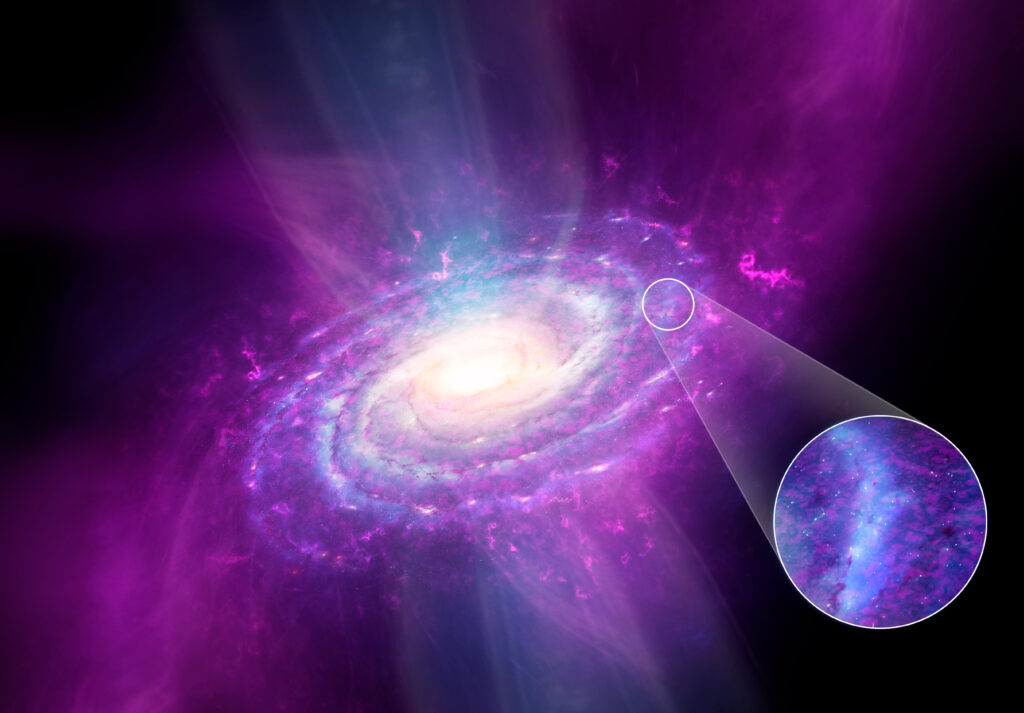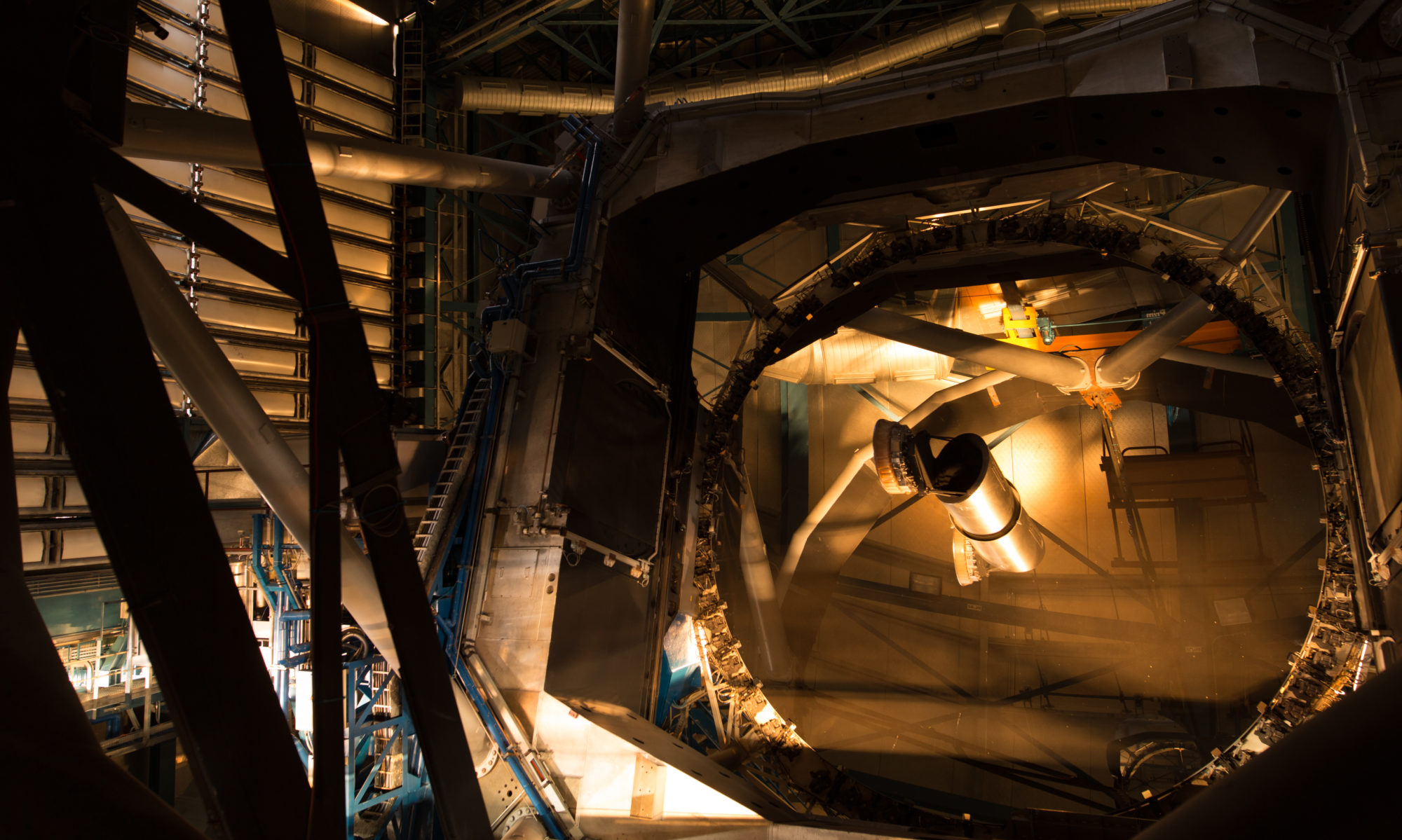Large variations in the chemical composition of the gaseous disk of the Milky Way, which was hitherto assumed to be homogeneous.
Stars and planets in our Galaxy form from the Interstellar Medium (ISM) gas, whose chemical composition is therefore crucial. It is usually assumed that the gas is well stirred and the amount of chemical elements in the ISM increases progressively with time because dying stars expel more and more chemical elements in their outskirts. Indeed, observations show that the metallicity (the amount of elements heavier than He with respect to H) of stars in the Milky Way span several orders of magnitude, because stars formed at different times in the Galactic history. Contrary to the expectations of a homogeneous ISM, however, we found large variations in the chemical composition of the Galactic gaseous disk.
Until recently, chemical-abundance measurements in the neutral ISM were complicated by the presence of cosmic dust and a phenomenon called dust depletion: large fractions of certain elements are missing from the gas because they have been incorporated into very small particles of dust. Because of this difficulty, until recently most observational and theoretical works have assumed that the metallicity of the neutral ISM in the vicinity of the Sun is the same as in the Sun, and is well mixed. In our work we used a new method for dust correction and could directly measure the metallicity of the neutral ISM in our Galaxy from new UV Hubble Space Telescope (STIS) and optical Very Large Telescope (UVES) observations of bright stars (2 – 8 mag). We found that the ISM metallicity, after correcting for dust, is often not as high as in the Sun, but instead shows large variations spreading over a factor of 10 and including many regions of low metallicity, down to ~17% Solar and possibly below.
Pristine gas (i.e. gas with low amounts of metals and no cosmic dust) infalling towards the Milky- Way disk can cause the observed chemical inhomogeneities on scales of tens of light years. While the existence of pristine gas accreting onto galaxies from the cosmic web is necessary for sustaining the observed levels of star formation and chemical abundances, observations of pristine gas in the disk of the Milky Way have been quite elusive so far. So the gas is not well mixed, and streams and pockets of pristine gas are “rejuvenating” our Galaxy by providing “fuel” for new star formation episodes. These ground-breaking results help us to better understand the observed variations of metal abundances in Milky-Way stars that have a common age, and have a profound impact for our understanding of the chemical evolution of galaxies.
These results are published in Nature: https://www.nature.com/articles/s41586-021-03780-0
Here you can find an openly-accessible version of the accepted (not final) manuscript**: full PDF
Annalisa De Cia, Edward Jenkins, Cédric Ledoux, Andrew Fox, Tanita Ramburth-Hurt, Christina Konstantopoulou, Patrick Petitjean, and Jens-Kristian Krogager

**This version of the article has been accepted for publication on Nature, after peer review, but is not the Version of Record and does not reflect post-acceptance improvements, or any corrections. The Version of Record is available at: http://dx.doi.org/10.1038/s41586-021-03780-0. Use of this version is subject to https://www.springernature.com/gp/open-research/policies/acceptedmanuscript-terms
